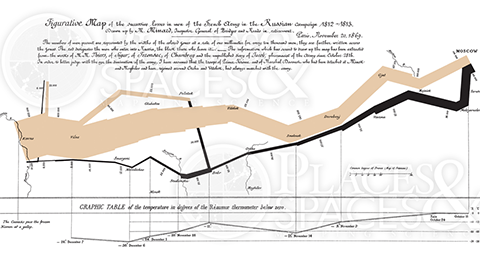Data visualization Army style

Emerging technologies allow the Army to quickly map assets around the world.

The famous 19th century graph by Charles Joseph Minard showing Napoleon’s troops during the invasion of Russia is an intersection of data, illustration and storytelling. The graph depicts three distinct and major variables that factored into the eventual French defeat – troop levels, temperature and movement.
Even though the process of cartography is starkly different in the 21st century, the use of pictures and diagrams as visual data is still prevalent, at least for the U.S. Army.
Data visualization is helping the Army cut through red tape by displaying information such as equipment counts in places all around the world, said Chuck Driessnack, vice president of missile defense at SAIC.
For example, Driessnack said that having a comprehensive view of the estimated $36 billion worth of equipment in Afghanistan is crucial as the U.S. continues to draw down its presence and bring equipment back home.

Charles Joseph Minard, a French civil engineer, drew this map depicting Napoleon's 1812 advance into and retreat from Russia. According to scimaps.org, it 'may be the best statistical graphic ever drawn.'
"We have all this equipment that has accumulated over all those operations and they're sitting over in Afghanistan and we're coming out," said Driessnack, who was speaking at the Tableau Customer Conference in National Harbor, Md., on Monday. Tableau Software specializes in making data digestible through visualization systems, and works with both the private and public sectors.
An example of SAIC’s visualization program is a map that shows how many Army ambulances are at locations around the globe.
"So what's common in these organizations is they have the data but they can't get arms around it," he said.
The other major benefit in implementing visualization systems is ensuring that personnel at every level receive consistent information through dashboards. This allows for better information sharing from data analysts all the way up to the upper echelons of Army leadership.
"I'm talking about from the four-star general all the way down to the analyst and they're seeing it all at the same time," Driessnack said.


